Monthly Archives: June 2018
ROAR! Fiercely Favorite Dinosaur Books for Kids
By Stacy Parish, Children’s Department
With the recent release of Jurassic World: Fallen Kingdom, the fifth film installment in the Jurassic Park series (F CRICHTON, the book from whence it all began, just so you grownup types will know) playing in a theater near you, what better tie-in than a blog about dinosaurs for those who are too young to get in to see a PG-13 flick?
 Let’s start off with two options from the fabulous Mo Willems: Edwina, The Dinosaur Who Didn’t Know She Was Extinct (J E WILLEMS) and Goldilocks and the Three Dinosaurs. Everyone in town loves Edwina, and what’s not to love? She makes excellent chocolate chip cookies, has spectacular fashion sense, but most of all, she is a great friend. So when oppressive know-it-all Reginald Von Hoobie-Doobie delivers a report to his classmates on “Things That Are Extinct,” no one really listens to him . . . no one except Edwina, that is. Hoobie-Doobie pontificated at great length as to the truth about dinosaurs, and Edwina was shocked (or “shook,” in today’s parlance.) But you know what? Edwina didn’t care! And by the end of his lecture, neither did RVHD. He was so stoked that someone finally listened to him, and was just pleased to enjoy Edwina’s friendship, along with a batch of her famous cookies. The subtle irony of the situation, combined with Willems’ signature artwork, make this a delightful read. Added bonus: cameo appearances by Willems’ Pigeon and Knuffle Bunny.
Let’s start off with two options from the fabulous Mo Willems: Edwina, The Dinosaur Who Didn’t Know She Was Extinct (J E WILLEMS) and Goldilocks and the Three Dinosaurs. Everyone in town loves Edwina, and what’s not to love? She makes excellent chocolate chip cookies, has spectacular fashion sense, but most of all, she is a great friend. So when oppressive know-it-all Reginald Von Hoobie-Doobie delivers a report to his classmates on “Things That Are Extinct,” no one really listens to him . . . no one except Edwina, that is. Hoobie-Doobie pontificated at great length as to the truth about dinosaurs, and Edwina was shocked (or “shook,” in today’s parlance.) But you know what? Edwina didn’t care! And by the end of his lecture, neither did RVHD. He was so stoked that someone finally listened to him, and was just pleased to enjoy Edwina’s friendship, along with a batch of her famous cookies. The subtle irony of the situation, combined with Willems’ signature artwork, make this a delightful read. Added bonus: cameo appearances by Willems’ Pigeon and Knuffle Bunny.
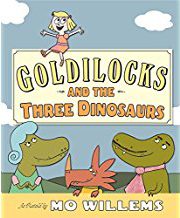 Further evidence of Mo Willems’ brilliance is found in Goldilocks and the Three Dinosaurs (J E WILLEMS), his sly and hilarious adaptation of the classic fairy tale. Behold: “Once upon a time, there were three hungry Dinosaurs: Papa Dinosaur, Mama Dinosaur . . . and a Dinosaur who happened to be visiting from Norway. One day—for no particular reason—they decided to tidy up their house, make the beds, and prepare pudding of varying temperatures. And then—for no particular reason—they decided to go . . . someplace else. They were definitely not setting a trap for some succulent, unsupervised little girl. Definitely not!” Hysterical, I tell you.
Further evidence of Mo Willems’ brilliance is found in Goldilocks and the Three Dinosaurs (J E WILLEMS), his sly and hilarious adaptation of the classic fairy tale. Behold: “Once upon a time, there were three hungry Dinosaurs: Papa Dinosaur, Mama Dinosaur . . . and a Dinosaur who happened to be visiting from Norway. One day—for no particular reason—they decided to tidy up their house, make the beds, and prepare pudding of varying temperatures. And then—for no particular reason—they decided to go . . . someplace else. They were definitely not setting a trap for some succulent, unsupervised little girl. Definitely not!” Hysterical, I tell you.
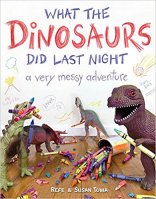 Here we have the perfect explanation for those trying times when you can’t find your mascara, and you are certain that you put it back in your traincase, or the crayons are inexplicably scattered across the playroom floor, and you know you stowed them neatly in their container before going to bed. What The Dinosaurs Did Last Night: A Very Messy Adventure by Refe and Susan Tuma (J E TUMA) is a whimsical and imaginative tale that will appeal to those of us who occasionally scoff at following the rules. See also: What The Dinosaurs Did At School by the same authors.
Here we have the perfect explanation for those trying times when you can’t find your mascara, and you are certain that you put it back in your traincase, or the crayons are inexplicably scattered across the playroom floor, and you know you stowed them neatly in their container before going to bed. What The Dinosaurs Did Last Night: A Very Messy Adventure by Refe and Susan Tuma (J E TUMA) is a whimsical and imaginative tale that will appeal to those of us who occasionally scoff at following the rules. See also: What The Dinosaurs Did At School by the same authors.
Rounding out the picture book category in today’s blog are the numerous How Do Dinosaurs . . . titles by Jane Yolen  and Mark Teague (J E YOLEN). The problem-solution formula for this series helps children and parents or caregivers navigate various situations such as anger management (How Do Dinosaurs Say I’m Mad?), personal responsibility and ownership (How Do Dinosaurs Clean Their Rooms?), social interaction (How Do Dinosaurs Play With Their Friends?) and many other scenarios. My personal favorite in the series is How Do Dinosaurs Go To Sleep?
and Mark Teague (J E YOLEN). The problem-solution formula for this series helps children and parents or caregivers navigate various situations such as anger management (How Do Dinosaurs Say I’m Mad?), personal responsibility and ownership (How Do Dinosaurs Clean Their Rooms?), social interaction (How Do Dinosaurs Play With Their Friends?) and many other scenarios. My personal favorite in the series is How Do Dinosaurs Go To Sleep?
For those times when you need more than a cute bedtime dinosaur story and want to expand your factual knowledge of prehistoric creatures, these two nonfiction choices fit the bill perfectly. Dinosaurs: A Visual Encyclopedia (J 567.9 DIN) and Ultimate Dinopedia: The Most Complete Dinosaur Reference Ever (J 567.903 LES) both contain profiles of hundreds of dinosaurs, including several recently discovered dinos. 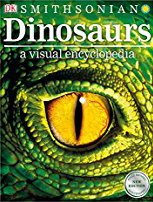

Darling Reader, wasn’t that ever so much better than watching a bunch of ill-mannered, poison-spitting, computer-generated dinosaurs? Happy reading!
As always, the opinions expressed here are solely those of the author, who wishes she had a pet pterodactyl so that she could avoid flying via commercial airlines. Also, I want to acknowledge a T. Rex-sized assist on this blog from my awesome friend Nate of Birmingham, Alabama.
June is African-American Music Appreciation Month
By Stacy Parish, Children’s Department
Originally decreed as Black Music Month by then-president Jimmy Carter in June 1979, the designation was changed in 2009 to African-American Music Appreciation Month. In his 2016 proclamation, former president Barack Obama stated that African-American music and musicians have helped our country “ . . . to dance, to express our faith through song, to march against injustice, and to defend our country’s enduring promise of freedom and opportunity for all.” Hence, I bring to you in no particular order, a great selection of books from Williamson County Public Library Children’s Department celebrating “Lady Day’s” soaring vocals, the Motown Sound, Bob Marley’s plaintive ballads, Jimi Hendrix’s groundbreaking guitar playing, and much more.
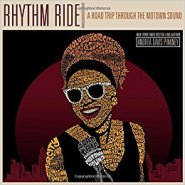 First on the list for today’s magical musical journey is Rhythm Ride: A Road Trip Through The Motown Sound by Andrea Davis Pinkney (J 781.6440 PIN) “You ready, child? Let’s go.” Thus begins this beautifully written account of young performers who were catalysts for change in American music, and along with it, a cultural revolution. The 1960s were exciting and often turbulent times. For Berry Gordy, the man who has been largely credited with creating what would come to be known as “the Motown Sound,” it all started with an $800 loan and a vision of greatness. The year was 1959, and Gordy was on the brink of something amazing, something that would have far-reaching influence on music for decades to come. Drawing upon the talents of his family and local performers, Gordy created a record label for black musicians such as Smokey Robinson, Mary Wells, Marvin Gaye, Stevie Wonder, Martha Reeves, and Diana Ross, just to name a few. The rest, as they say, is history.
First on the list for today’s magical musical journey is Rhythm Ride: A Road Trip Through The Motown Sound by Andrea Davis Pinkney (J 781.6440 PIN) “You ready, child? Let’s go.” Thus begins this beautifully written account of young performers who were catalysts for change in American music, and along with it, a cultural revolution. The 1960s were exciting and often turbulent times. For Berry Gordy, the man who has been largely credited with creating what would come to be known as “the Motown Sound,” it all started with an $800 loan and a vision of greatness. The year was 1959, and Gordy was on the brink of something amazing, something that would have far-reaching influence on music for decades to come. Drawing upon the talents of his family and local performers, Gordy created a record label for black musicians such as Smokey Robinson, Mary Wells, Marvin Gaye, Stevie Wonder, Martha Reeves, and Diana Ross, just to name a few. The rest, as they say, is history.
 Next up on the recommended reading list for African-American Music Appreciation Month is Jimi: Sounds Like A Rainbow written by Gary Golio and illustrated by Javaka Steptoe (J 92 HENDRIX). A stylishly written and illustrated story of the phenomenally talented James Marshall Hendrix, known to the world as Jimi, who departed this earth at the way-too-soon age of 27. His legacy lives on decades later, and his groundbreaking music continues to inspire and electrify fans of all ages.
Next up on the recommended reading list for African-American Music Appreciation Month is Jimi: Sounds Like A Rainbow written by Gary Golio and illustrated by Javaka Steptoe (J 92 HENDRIX). A stylishly written and illustrated story of the phenomenally talented James Marshall Hendrix, known to the world as Jimi, who departed this earth at the way-too-soon age of 27. His legacy lives on decades later, and his groundbreaking music continues to inspire and electrify fans of all ages.
Strange Fruit: Billie Holiday And The Power Of A Protest Song by Gary Golio (J 782.4216 GOL).  At the time of her death from liver and heart failure in 1959 at the age of 44, Billie Holiday (nee Eleanora Fagan) was heralded as one of the greatest female vocalists and jazz singers of all time. Her best-selling record and signature song “Strange Fruit” challenged the attitudes of racism in America and was an important milestone in what would become the American civil rights movement.
At the time of her death from liver and heart failure in 1959 at the age of 44, Billie Holiday (nee Eleanora Fagan) was heralded as one of the greatest female vocalists and jazz singers of all time. Her best-selling record and signature song “Strange Fruit” challenged the attitudes of racism in America and was an important milestone in what would become the American civil rights movement.
No reading list about African-American music would be complete without mention of the excellent books about black musicians in the “Who Is/Who Was?” series, which features titles such as Who was Bob Marley? (J 92 MAR), Who Was Louis Armstrong? (J 92 ARM), Who Was Stevie Wonder? (J 92 WON), and Who Was Michael Jackson? (J 92 JAC). The books in this series feature whimsical illustrations and side notes about the subject, and are so much fun to read . Check ‘em out! (OK, that’s my one and only pun for this blog, I swear.)
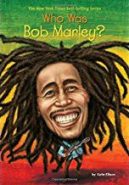


 Trombone Shorty by Troy “Trombone Shorty” Andrews (J 788.9316 AND) is a delightful, picturesque story of how a talented young boy from New Orleans didn’t always have the money to buy an instrument, but he did have the dream to play music. Plucked from a crowd by none other than the legendary Bo Diddley and allowed to play his trombone on stage, he was then inspired to form his own band. Today, Andrews is a frequent performer at the annual New Orleans Jazz & Heritage Festival, the place where he got his first break.
Trombone Shorty by Troy “Trombone Shorty” Andrews (J 788.9316 AND) is a delightful, picturesque story of how a talented young boy from New Orleans didn’t always have the money to buy an instrument, but he did have the dream to play music. Plucked from a crowd by none other than the legendary Bo Diddley and allowed to play his trombone on stage, he was then inspired to form his own band. Today, Andrews is a frequent performer at the annual New Orleans Jazz & Heritage Festival, the place where he got his first break.
 Last but not least on my list of recommendations is Bob Marley: The Life Of A Musical Legend by Gary Jeffrey (J 92 MARLEY). Part biography, part graphic novel, this very cool book celebrates famed Jamaican musician Bob Marley. His body ravaged by cancer, Marley departed this earthly realm at the young age of 36, but his music and his message of peace continues to inspire people all over the world.
Last but not least on my list of recommendations is Bob Marley: The Life Of A Musical Legend by Gary Jeffrey (J 92 MARLEY). Part biography, part graphic novel, this very cool book celebrates famed Jamaican musician Bob Marley. His body ravaged by cancer, Marley departed this earthly realm at the young age of 36, but his music and his message of peace continues to inspire people all over the world.
As always, the opinions expressed in this blog are those of the author alone, and not representative of any other WCPL employees. Ms. Parish can occasionally be overheard quoting Jimi Hendrix’s lyrics and belting out “Voodoo Chile,” but only when she’s home alone or behind the wheel of her car.
We’re Not Dead Yet!: Broadway Musicals in Revival
By Lindsay Roseberry, Reference Department
Did you grown up singing along with the cast recording of Broadway musicals? If you are of a certain age, perhaps you did. My mother had many of them, and I enjoyed singing along, whenever I knew the words. Home was so very far away from New York in those days, so the cast albums (I’m talking old 78s and 33 1/3s) were the closest you could get to the plays themselves. This was before the internet, when many areas of the country only got three television channels. This was before cable. Yes, I am old. But I always remember how much fun I had listening to the musicals. And I know I am not alone.
 So what musicals have been the most popular through the years, popular enough to keep bringing them back, that is?
So what musicals have been the most popular through the years, popular enough to keep bringing them back, that is?
1. Porgy and Bess (music by George Gershwin, book and lyrics by Ira Gershwin , based on the book by Dubose Heyward)**
Porgy and Bess premiered in 1935 on Broadway, and has been brought back to Broadway seven times! Part of the popularity is the story and part, possibly the larger part, is the music by George and Ira Gershwin. And it is the most revived musical on Broadway.
2. The Threepenny Opera (music by Kurt Weil, book and lyrics by Bertolt Brecht)
The Threepenny Opera premiered in 1933; it has been revived six times. This play was adapted from the book The Beggar’s Opera written in 1728. This musical may qualify as being from the oldest extant source!
3. Show Boat (music by Jerome Kern, book and lyrics by Oscar Hammerstein II)
Before Hammerstein teamed up with Richard Rodgers he was famous in his own right. He just became more so in the famous partnership. This musical has also been revived six times. “Ol’ Man River” and “Can’t Help Lovin’ Dat Man” are always show stoppers.
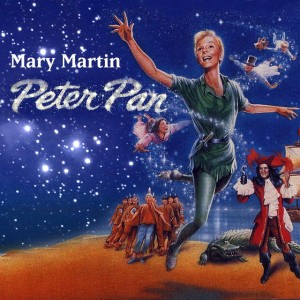 4. Peter Pan (music by Mark Charlap and Jule Stine; book and lyrics by Carolyn Leigh)
4. Peter Pan (music by Mark Charlap and Jule Stine; book and lyrics by Carolyn Leigh)
Peter Pan is the fourth most restaged musical. I’m sure you thought it would be on the list somewhere! It’s a perennial favorite for all ages, and those of us old enough will remember that Mary Martin starred as Peter in the first show in 1954. She was the mother of Larry Hagman who became a star in I Dream of Jeannie, and became a megastar in Dallas.
5. Guys and Dolls (music and lyrics by Frank Loesser and book by Abe Burrows)
This musical premiered in 1950. Some from younger generations may be surprised that Marlon Brando starred in the film adaptation, singing and dancing. Nathan Lane starred in the 1992 revival. I’m sure that was a good one.
 6. Fiddler on the Roof (music by Jerry Bock, lyrics by Sheldon Harnick and book by Joseph Stein)
6. Fiddler on the Roof (music by Jerry Bock, lyrics by Sheldon Harnick and book by Joseph Stein)
Next is one you probably thought should have been higher up on the list. The book was based on the stories of Sholom Aleichem, telling the story of the Jews living in the Soviet Union and how they lived there. It first premiered in 1964 and was an immediate hit. The movie was wonderful, too.
7. Carousel (music by Richard Rodgers, and book and lyrics by Oscar Hammerstein II)
Now we come to the famous pairing of Rodgers and Hammerstein. This was the second play in their partnership. Oklahoma was the first, and it changed the way musicals were written and performed. Carousel only cemented their fame, and they were even nominated for a Tony award.
8. West Side Story (music by Leonard Bernstein, lyrics by Stephen Sondheim and book by Arthur Laurents)
West Side Story is the eighth most popular revival. I’m surprised it’s not higher on the list. But perhaps because it was based on one of Shakespeare’s most famous plays was what made it so popular (aka Romeo and Juliet). You can’t go wrong with Shakespeare… It premiered in 1957, and was so popular it came back to Broadway three years later.
 9. Pal Joey (music by Richard Rodgers; book and lyrics by Lorenz Hart, based on the book by John O’Hara)
9. Pal Joey (music by Richard Rodgers; book and lyrics by Lorenz Hart, based on the book by John O’Hara)
The character and stories from this musical were based on short stories by John O’Hara that appeared in the New Yorker; he later published these stories as a novel. The play received mixed reviews from the critics, but ran for ten months, so it was popular. Not smash hits like with Rodgers and Hammerstein…
10. Oklahoma (music by Richard Rodgers, and book and lyrics by Oscar Hammerstein II)
Speaking of Rodgers and Hammerstein, Oklahoma is the next most revised musical. This one was the first by the duo. This musical broke the mold. The singing was part of the dialogue, not just song and dance numbers interspersed in between dialogue.
Some people in the business aren’t sure all of the old favorites should be revived. Some of the shows continue stereotypes, while others deal with abuse or misogyny. And what about the revivals taking away room for new musicals to come to town; others have concerns about this possibility too.
In a November New York times article, Georgia Stitt, a composer, lyricist and musician, posted this on social media last fall as the 2017 season was being announced:
“With respect to the creatives who will be employed by these projects, I will say I’m concerned about a Broadway season that includes PRETTY WOMAN, CAROUSEL and MY FAIR LADY all at the same time. In 2017 is the correct message really “women are there to be rescued? It’s frustrating that the material people seem to want to throw their energy into is old properties where women have no agency, and then there is the real scarcity of women on the creative teams.”
–Georgia Stitt (@georgiastitt) November 22, 2017
Creative teams have sought to rework problematic classic musicals, either by changing wording (only possible with permission from the writers’ representatives), or by rethinking staging.
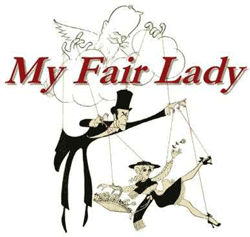 Critiques of My Fair Lady have focused not only on the show’s final exchange, but on the Pygmalion narrative itself. “Oh gosh, it is very, very sexist,” Julie Andrews, who originated the role of Eliza on Broadway in 1956, told an interviewer last year. “Young women in particular will and should find it hard.”
Critiques of My Fair Lady have focused not only on the show’s final exchange, but on the Pygmalion narrative itself. “Oh gosh, it is very, very sexist,” Julie Andrews, who originated the role of Eliza on Broadway in 1956, told an interviewer last year. “Young women in particular will and should find it hard.”
Pretty Woman, which will be staged for the fall 2018 season, faces different challenges, as a new musical with no pre-existing book or score. It will have a production in Chicago this spring and is then scheduled to open on Broadway in August.
Some artists think that there are a few musicals that need to be revived. What about Funny Girl, 1776, Titanic or A Funny thing Happened on the Way to the Forum? Grand Hotel, anyone??
A few final words about musicals: This year Love Never Dies will be shown in North America for the first time. The sequel is set in New York, ten years after the ending of the Phantom of the Opera ends. It started in Detroit and now is coming to TPAC. And yes the music and lyrics are by Andrew Lloyd Webber.
** So what exactly do these musical terms mean? The music itself, often called the score, is often written by a different person than the person who writes the lyrics, (a.k.a. the words in the songs). Think of Rodgers and Hammerstein. Then think of Andrew Lloyd Webber or Stephen Sondheim. Both of these men often wrote the words and music for their productions. The book is the words, the actual story of the musical, sometimes based on a book, as in Phantom of the Opera.
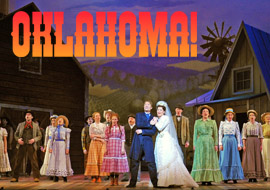 Sources:
Sources:
- The 23 Most-Revived Musicals in Broadway History Since 1927
- 10 Musicals Due for a Broadway Revival
- The Problem With Broadway Revivals: They Revive Gender Stereotypes, Too
- Do Revivals Inhibit New Broadway Musicals?
- https://www.huffingtonpost.com/entry/the-phantom-of-the-opera-sequel-love-never-dies_us_59e29b7ee4b09e31db9759aa
The Suspense is Terrible! (ɪ ʜᴏᴘᴇ ɪᴛ ᴡɪʟʟ ʟᴀsᴛ.)*
By Chelsea Bennett, Reference Department
₮ⱧɆ ₴Ʉ₴₱Ɇ₦₴Ɇ ł₴ ₮ɆⱤRł฿ⱠɆ
When confronted with a thriller, I used to think, “Here’s a novel that features guns, bombs, and lies. Probably some politics, too.” And while those elements might feature in some bestselling books, I now know how narrow my perception was. For I have probed past the whims of pop culture, and discovered some of the fascinating premises to be found within the realm of suspense, thriller, and crime novels. While this genre may not be new to you, I hope you’ll follow along with this two-part post, and perhaps leave your best recommendations at the end.
“Crime pays,” says journalist Anita Singh, writing for The Telegraph: “thrillers and detective novels now outsell all other fiction.” [1] It’s a broad category: these novels might be packed with fast-paced action (the Jason Bourne series), psychological drama (Gone Girl), or military intrigue (The Hunt for Red October). With high stakes and life-or-death outcomes, thrillers often become the basis for hit movies. And while supernatural or dystopian tales may have had a surge in popularity over recent years, thrillers continue to enthrall us because they could happen. Grounded in reality, often set in present-day, they let us imagine what life would be like if we got on the wrong side of a corrupt government – or a jealous lover.
But why would anyone want to do that? The late novelist and critic Mary McCarthy explained it this way: “We all live in suspense, from day to day, from hour to hour….” And, as writer Lisa Gardner adds, “…one of the appeals of suspense is [that we can] safely explore our innermost fears.” [2] In other words, we all live with a high degree of uncertainty in our lives. The more nervous, fragile, lonely, pessimistic, or uninformed we feel, the more we fear that uncertainty. When fiction addresses that primal fear, it allows us to take a breath, say to ourselves, “OK. What if?” and confront those worst-case scenarios. Fear often shrinks under scrutiny. And if we vicariously reach a satisfying solution through the deeds of our literary avatars, so much the better.
Today, we’ll start with the heavy hitters: the names that even I recognized! Then we’ll look at the classic works of literature that paved the way for those authors. Next week, we’ll scrounge up a few “deep cuts” – lesser-known works of suspense by authors who usually fit into a different genre. And we’ll highlight some of the women authors who are shaking things up in the realm of suspense.
 Heavy Hitters
Heavy Hitters
- Ian Fleming, author of the James Bond Casino Royale is a classic. Fleming said, “While thrillers may not be Literature with a capital L, it is possible to write what I can best describe as ‘thrillers designed to be read as literature’.” [3]
- Robert Ludlum, creator of the character Jason Bourne. Ludlum died in 2001, but the wildly popular Bourne series continues, thanks to a collective of authors who carry his torch.
- Stieg Larsson’s Millennium series also continues posthumously, following the success of Larsson’s first three novels, beginning with The Girl with the Dragon Tattoo.
- Tom Clancy created the Jack Ryan character in The Hunt for Red October. There are now more than 20 novels in the series.
- John le Carré introduced British intelligence officer George Smiley in Call for the Dead, and he appears in nine other novels, perhaps most famously in Tinker Tailor Soldier Spy.
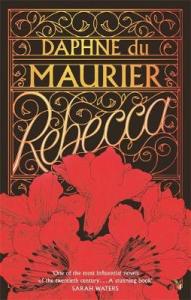 The Classics
The Classics
- The Secret Agent: A Simple Tale by Joseph Conrad. A tale of terrorism, anarchy, and political intrigue, set in 1880s London.
- Rebecca by Daphne du Maurier. Although many modern reprints give this gothic work the appearance of a romance novel, it’s a psychological work that led to a rather faithful film adaptation by that master of suspense, Sir Alfred Hitchcock.
- A Study in Scarlet by Sir Arthur Conan Doyle. This is the first appearance of Sherlock Holmes, star of four novels and many short stories by Doyle. Fans of the BBC series Sherlock may find the differences – and similarities – amusing.
- “The Murders in the Rue Morgue” by Edgar Allan Poe. Before there was Sherlock Holmes, there was C. Auguste Dupin, Poe’s amateur detective with uncanny skills of deduction. Dupin appears in two more of Poe’s stories.
- A Coffin for Dimitrios by Eric Ambler (also titled The Mask of Dimitrios). Charles Latimer is a mystery novelist becomes intrigued by a dead man’s past, which leads to dangerous consequences. The story is described as a hybrid of “spy thriller” and “detective noir.” [4] There is a sequel, The Intercom Conspiracy.
- The Mysteries of Udolpho by Ann Radcliffe. This is a “quintessential Gothic romance,” with a young heroine in both physical and psychological danger. Austen, Poe, and others were heavily influenced by Radcliffe. [5]
- The Woman in White by Wilkie Collins. “Pursuing questions of identity and insanity along the paths and corridors of English country houses and the madhouse, [it] is the first and most influential of the Victorian genre that combined Gothic horror with psychological realism.” [6]
That’s all for this week. Check back next week as I do my best to turn up some unexpected finds, and explore the success of women authors in this genre. Don’t forget to share your favorites (especially classics) in the comments below!
- https://www.telegraph.co.uk/news/2018/04/11/crime-pays-thrillers-detective-novels-now-outsell-fiction/
- http://www.azquotes.com/quotes/topics/suspense.html
- https://en.wikipedia.org/wiki/Ian_Fleming#Style_and_technique
- https://www.goodreads.com/review/show/1769367771
- https://offtheshelf.com/2017/02/the-best-suspense-novels-by-women-from-agatha-christie-to-gillian-flynn/
- https://www.goodreads.com/book/show/5890.The_Woman_in_White
* A line you will recognize from either The Importance of Being Earnest or Willy Wonka & the Chocolate Factory, depending on your tastes.
Music Scenes in Franklin
By Lindsay Roseberry, Reference Department
We all know that Nashville is called “Music City” with all the concerts and venues that take place all over Nashville and Davidson County, covering so much more than country music these days, too. But, Williamson County is catching up and has quite a few venues that may interest you. From the annual Pilgrimage Festival to summer concerts to weekly and daily music venues, Franklin and Williamson County have much to offer!
If you want to relax and have a meal while listening to music, try out these restaurants in the area:
The Bunganut Pig does have a strange name but it has good food. It’s been in Franklin for over twenty years; there’s a sign out front that boasts the “best burger in town.” It is a laid back place to eat, with a varied menu. There is live music on the patio in the summer, and dance bands perform on the weekends.
does have a strange name but it has good food. It’s been in Franklin for over twenty years; there’s a sign out front that boasts the “best burger in town.” It is a laid back place to eat, with a varied menu. There is live music on the patio in the summer, and dance bands perform on the weekends.
Puckett’s Grocery and Restaurant started in Leiper’s Fork as a small restaurant in the 1950s; word spread and now there are six area restaurants. The original one is still in in Leiper’s Fork, and next Franklin, then spreading out to Nashville, Columbia and Murfreesboro. Franklin also boasts Puckett’s Boat House, which is actually in a refurbished boat house. All of the locations have live music most days of the week.

From VisitFranklin.com
Puckett’s Grocery & Restaurant in Leiper’s Fork, Tennessee, is more than just a place to enjoy a good meal. It’s a popular destination for locals and tourists alike. With mismatched tables and chairs and an eclectic clientele of tourists, farmers, songwriters, and country music stars, it’s a restaurant serving up a dining experience unlike any other. It is even on the National Register of Historic Places in America! Founded by the Puckett family in the 1950s, Puckett’s served as a country store to several communities in Williamson County. From fresh groceries and a good southern meal, to a tank of gas and a place to catch up with friends, Puckett’s has become a staple in the Leiper’s Fork community.
Puckett’s in Franklin is focused on providing friends new and old with great food and Southern hospitality. They built a name on hosting live, local musical acts and serving Southern staples. They offer live music Tuesday through Saturday.
Puckett’s Boat House is in Franklin’s old Boat Locker at 94 E. Main Street; they offer by-the-shore dishes that are reminiscent of the Gulf coast and the Big Easy, plus Southern staples. They also offer an oyster bar and a wine bar. Every Tuesday through Saturday they offer live music.
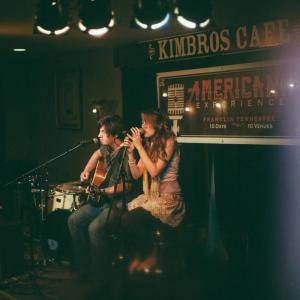
From VisitFranklin.com
Kimbro’s opened in 2005 as a pickin’ parlor by songwriter Ron Kimbro. In 2007 Will Jordan became a partner and changed it to a music venue. In 2014, Jordan became the sole owner. In 2013, Kimbro’s won second place behind The Ryman Auditorium for “Best Live Music Venue” in The Tennessean’s 2013 reader’s pole and second place behind The Bluebird for “Best Open Mic” in The Nashville Scene’s reader’s pole. In addition to incredible music, Kimbro’s also offers a fantastic menu of homemade foods from specialty salads to gourmet burgers, delicious sandwiches and fantastic sides. It also features more than 30 different varieties of imported and domestic beer and draft options are all made by local brewers; they also have a complete wine selection, mimosas, sangria and ciders.
The Whiskey Room at King’s Bowl at the Galleria is a relative newcomer to the area. Kings Bowl was founded in 2002 as a mission to create a new dining and entertainment experience that revitalizes the charm and nostalgia of bowling and other social games that have faded in America since their heydays. Not your average bowling alley, Kings Dining & Entertainment takes a restaurant-first approach with amazing scratch dishes from its chef-driven, award-winning kitchen in a classic retro environment. At King’s Dining & Entertainment, you can dine in one of three premium bars, on a 60-seat patio with fire pit and beer garden, or right at your bowling lane.
The Whiskey Room LIVE, part of the King’s Bowl complex, is a 120-seat entertainment stage with state-of-the-art audio and lighting. “Music is part of our DNA,” the owner said, and the Nashville area just seemed like an ideal location to introduce our first Whiskey Room and music venue.”
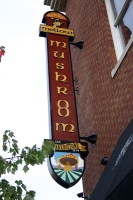
thefuntimesguide.com
Mellow Mushroom Pizza Bakers was established in 1974 in Atlanta, Georgia as a single pizzeria; the headquarters are still there. This downtown restaurant has live music in the summer on the square. Sixty-Four, a Beatles cover band, will be playing every second Saturday!
The Gray Drug Co. was a landmark pharmacy here for nearly a century. In 2013, after careful restoration, the three-story Gray’s on Main was unveiled, honoring Tennessee’s cultural heritage through fresh spirits, flavors and sounds. The menu reflects the best of the South in food, with a focus on locally and regionally sourced ingredients. The second floor bar and music hall features live performances from the best musicians in the area.
The Pond is a local neighborhood bar with music; they also offer happy hour daily from to 7 p.m. The bar is for 21+ and they do allow smoking. And for those who like late nights, they are open until 3:00 a.m.
Arrington Vineyards opened its doors July 1, 2007. Since then, we have been providing a “wine country experience” of award winning wines set among the picturesque rolling hills of middle Tennessee. Arrington Vineyards hosts Music in the Vines every year from April through October every Saturday and Sunday. To view the entire schedule, check the event calendar. They offer two live music locations on the property; they host live jazz groups in the courtyard and live bluegrass bands by the Grand Barn. Both music events are free!

from visitfranklin.com
The Franklin Theatre was established in 1937, but time caught up with the theatre and in 2007 it closed. Thanks to a community wide effort, headed by the Heritage Foundation, the theatre was restored. It now shows standard movies, recorded music and now also has live music. Featuring well known groups and singers, the theatre has reclaimed its place in downtown.
Music City Roots, Live From The Factory is a weekly, radio show and webcast that revives the historic legacy of live musical radio production in Nashville. Broadcast on Wednesday nights from 7pm to about 9:30 pm, CST, Music City Roots showcases Nashville’s astonishing music scene, from country and Americana to more progressive interpreters of tradition — a “roots and branches” format that brings together fans of different tastes and generations. The show is broadcast live over WMOT/Roots Radio 89.5 FM from Middle Tennessee State University and webcast in Livestream.
Graystone Quarry in Thompson Station is just beginning to be an outdoor music venue and there will be outdoor music concerts coming soon!
And we can’t leave out the big annual music festival at Harlinsdale Farm! The Pilgrimage Music and Cultural Festival is become a well-known outdoor music concert. 2018 will be the 3rd year, and it continues to grow and have popular musicians.
Chess in SP-A-A-A-A-C-E!
By Howard Shirley, Teen Department
 The game of chess reaches back to at least the 6th Century AD, but its origins remain unclear. Though generally thought to have arisen in India, both China and Persia lay claim to the game, and other cultures have some variation of chess-like games (some still played today). Even the Vikings had a chess-like game by the nearly unpronounceable name “hnefatafl.” (Say that three times fast, if you can say it at all.)
The game of chess reaches back to at least the 6th Century AD, but its origins remain unclear. Though generally thought to have arisen in India, both China and Persia lay claim to the game, and other cultures have some variation of chess-like games (some still played today). Even the Vikings had a chess-like game by the nearly unpronounceable name “hnefatafl.” (Say that three times fast, if you can say it at all.)
Regardless of their differences, all these games have one thing in common: they’re all flat.
This is hardly surprising. Chess in many ways derives from concepts of ancient warfare, which, for tens of thousands of years, was mostly a (violent) meeting on roughly flat open areas. Even if there were hills or walls or fortresses or towers involved, for the most part nobody could move over (or under) the enemy. Chess did allow one piece—the knight—to leap over intervening pieces as part of its move, but for every other piece the world of chess remained solidly flat (Christopher Columbus not withstanding).
 Moving Up (and Down)
Moving Up (and Down)
During the 19th century an attempt was made to extend chess into three dimensions by stacking eight boards on top of each other (yes, 8). Well, chess wasn’t flat any more. But one can question whether it was playable!
As the 20th century arrived, and brought with it both the airplane and the submarine, the idea that chess should move into the third dimension again came out. This time, the design was restricted to 5 stacked boards, and added an unusual piece (the “unicorn”) which could make triangular movements (no, I don’t know what that means, either). The creator started a club for fans (in 1919 Germany), which lasted until World War II, when, apparently, Germany itself decided to try it all out in Real Life. And that pretty much ended that version of Germany, as well as that version of 3D chess.
Where No Chess Game Has Gone Before
 Fast forward twenty some-odd years to the creation of a new American science fiction show named Star Trek. Set in the 23rd century, the show featured the now famous starship Enterprise, filled with amazing advanced technology, like automatic sliding doors that went “whoosh,” wall slots that cooked food in an instant, a talking computer, and more. (Hey, in the 1960s, all that stuff was futuristic and cool.) The show also included an unusually-shaped chess set, consisting of three quarter-sized chess boards in three staggered levels on an unusual crescent-shaped support, and four smaller boards on posts at the corners of these boards. The smaller boards were additional levels, halfway between the larger boards, and were often in different positions on the show, indicating that they could be moved (though this action was never shown on the show). The chess set was unusual-looking, implied a high level of complexity, and the open design clearly allowed the pieces to be easily moved (which the early 3D attempts mentioned above did not).
Fast forward twenty some-odd years to the creation of a new American science fiction show named Star Trek. Set in the 23rd century, the show featured the now famous starship Enterprise, filled with amazing advanced technology, like automatic sliding doors that went “whoosh,” wall slots that cooked food in an instant, a talking computer, and more. (Hey, in the 1960s, all that stuff was futuristic and cool.) The show also included an unusually-shaped chess set, consisting of three quarter-sized chess boards in three staggered levels on an unusual crescent-shaped support, and four smaller boards on posts at the corners of these boards. The smaller boards were additional levels, halfway between the larger boards, and were often in different positions on the show, indicating that they could be moved (though this action was never shown on the show). The chess set was unusual-looking, implied a high level of complexity, and the open design clearly allowed the pieces to be easily moved (which the early 3D attempts mentioned above did not).
This three-dimensional chess set made prominent appearances in several episodes from the very beginning of the show. In three episodes, the chess game would be a pivotal plot element in the story’s resolution.* (How many television shows and movies, not about chess itself, have gone so far as to make chess central to the story?) Twenty years later, the show jumped from TV to film, and so did the chess set (at least as an idea). In Star Trek II: The Wrath of Khan, during a grand duel between battling starships, the heroes arrive at a crucial realization—namely that the villain’s tactics “reveal two-dimensional thinking.” Tellingly, early in the film the villain’s home was shown to have a crude, handmade two-dimensional checkers board game present—intentionally invoking memories of the three-dimensional chess set fans knew Spock and Kirk played. The implication? Had Khan played the same game as Kirk, he would have thought more broadly in his tactics. Without even showing the three-dimensional set, the movie made its existence again pivotal to the plot!
 So, what does this game have to do with the Williamson County Public Library?
So, what does this game have to do with the Williamson County Public Library?
Well, thanks to yours truly, with assistance and advice from fellow staffer Lon Maxwell, the Teen Room now has one of these sets, completely homemade (except for the pieces; I’m not that skilled). The design is a bit different, but I humbly think it looks just as cool (if not cooler) as the original set crafted for the show.
How Do You Play?
Very Well, Thank You.
Okay, this is the kicker, actually. The answer to “How do you play Three Dimensional Chess?” is quite simply “How do you want to play it?”
You see, the original chess set was merely a prop. The design had nothing to do with creating an actual, playable game, but with creating an interesting, visual set object on which the actors could move the pieces about to create the appearance of a complicated game—a game “from the future,” as it were! Indeed, if you pay attention to the scenes in which characters play the game (and if you know about chess), you can quickly discern that there doesn’t seem to be any rhyme or reason to the movement or the declared progress of the game in the dialog. In one of the earliest episodes to feature the game—“Charlie X,” the second episode ever aired—Kirk and Spock play chess, with Spock moving a knight and declaring “check,” when in fact Kirk’s king couldn’t possibly be in check from the knight’s movement. Actor Leonard Nimoy is clearly just moving pieces around in a visually interesting manner, but he’s not simulating any relationship to chess, 3D or otherwise. By contrast, William Shatner’s moves in this sequence can reasonably be assigned to the pieces being used, as well as his declaration of “checkmate,” representing a logically valid position (though really only for “check,” but still…).** So there was a prop, but not really a game.
 But in 1975 artist and writer Joseph Franz contacted Paramount Studios, who held the rights to Star Trek, about a book he called “The Star Trek Technical Manual: Training Command Starfleet Academy.” The book would be a collection of detailed plans and drawings of Star Trek ships and equipment (even uniforms), all presented as if these were actual designs of futuristic devices, inadvertently downloaded into a 20th century USAF mainframe during the events of the episode “Tomorrow is Yesterday.” Paramount agreed, the book was published and snapped up by Trekkies around the globe. One of the schematics included in the book were the blueprints for a “tri-dimensional chess set,” as Franz dubbed it. He even included a cursory (yet incomplete) set of rules, as well as diagrams of how the smaller post boards might be moved over the course of the game. It was now possible for Trek and chess fans to at least build a set themselves, and even attempt to turn the simple rules into a playable reality.
But in 1975 artist and writer Joseph Franz contacted Paramount Studios, who held the rights to Star Trek, about a book he called “The Star Trek Technical Manual: Training Command Starfleet Academy.” The book would be a collection of detailed plans and drawings of Star Trek ships and equipment (even uniforms), all presented as if these were actual designs of futuristic devices, inadvertently downloaded into a 20th century USAF mainframe during the events of the episode “Tomorrow is Yesterday.” Paramount agreed, the book was published and snapped up by Trekkies around the globe. One of the schematics included in the book were the blueprints for a “tri-dimensional chess set,” as Franz dubbed it. He even included a cursory (yet incomplete) set of rules, as well as diagrams of how the smaller post boards might be moved over the course of the game. It was now possible for Trek and chess fans to at least build a set themselves, and even attempt to turn the simple rules into a playable reality.
Around this same time, Paramount also licensed the Franklin Mint to create and sell a high-end gold and silver official Star Trek Three Dimensional Chess set, complete with “official” rules. The “official” rules were reportedly borrowed from a 1977 magazine, The Star Trek Giant Poster Book, Voyage #14, who supposedly themselves borrowed the rules from an unattributed fan author. (This author may be Andrew Bartmeiss, who currently sells “The Federation Standard Rules” online. According to Bartmeiss, he contacted Joseph Franz about the set design, and Franz encouraged him to create the rules.) The Franklin Mint licensed set is still sold—for about $300 a pop!
(The set in the Teen Room cost the maker (yours truly) $20 (in materials). You can read about that here: https://parzivalsplace.blogspot.com/2018/05/queen-to-queens-level-two-mr-spock.html )
There are a number of other rules around the Internet, including “Tournament” Rules, a number of themed variants, and even a computer game version named “Parmen,” after a Star Trek villain (who, oddly, never played the game).
All the versions tend to share distinct similarities:
- Pieces move horizontally as in standard chess.
- Pieces can move between levels vertically, but only when also moving horizontally.
- Pieces can move above or below pieces on other levels.
- The smaller “attack boards”*** can be moved to new positions, potentially carrying a piece with them.
- The game may have as many as seven levels, or as few as four, depending on the position of the smaller boards.
StarChess, or, The Way We Play It
But truth be told, none of these rules are “official.” You can pretty much find the set you like the most, and play those. In the Teen Room, we offer StarChess, created by yours truly. (You can find a link to these rules on my blog: https://parzivalsplace.blogspot.com/2018/05/queen-to-queens-level-two-mr-spock.html ) I think they work rather well, but try for yourself.
And if you are a teen (or have one), you’re welcome to come try the game in the Teen Room. The set is generally available Saturday-Tuesday. Mr. Howard (yours truly) will be happy to teach you, or the rules are available if your prefer. (Note that due to Teen Room age policies, the set is restricted to use by teens ages 12-18, though adults who accompany teens can play for a short time, if the room is not busy. Check with the Teen Staff!)
Live long and prosper—and enjoy the future of chess!
 Have you been on the edge of your seat, waiting for this next installment of my Suspense Spectacular? (Just answer Yes; let’s get an atmosphere going.) My
Have you been on the edge of your seat, waiting for this next installment of my Suspense Spectacular? (Just answer Yes; let’s get an atmosphere going.) My  Women of the Genre
Women of the Genre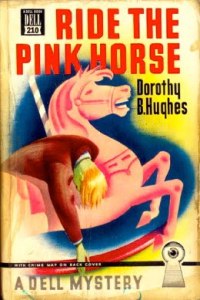 Dorothy B. Hughes, Ride the Pink Horse; In a Lonely Place.
Dorothy B. Hughes, Ride the Pink Horse; In a Lonely Place. Renée Ahdieh updates the story of Scheherazade (1001 Nights) in The Wrath & the Dawn.
Renée Ahdieh updates the story of Scheherazade (1001 Nights) in The Wrath & the Dawn.
